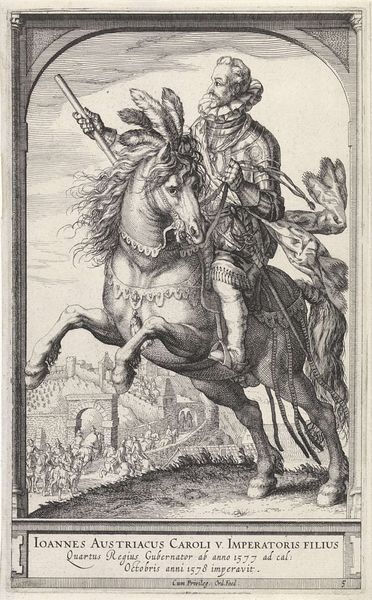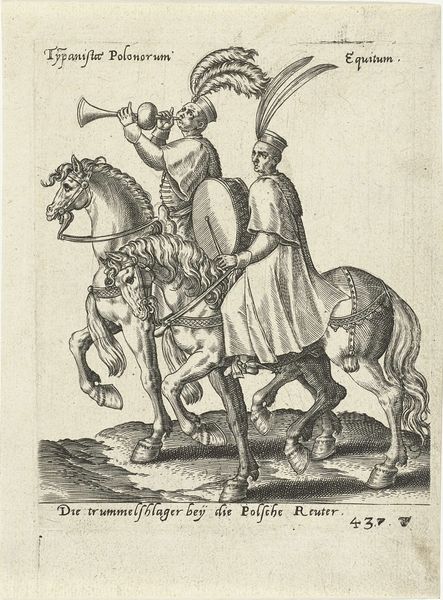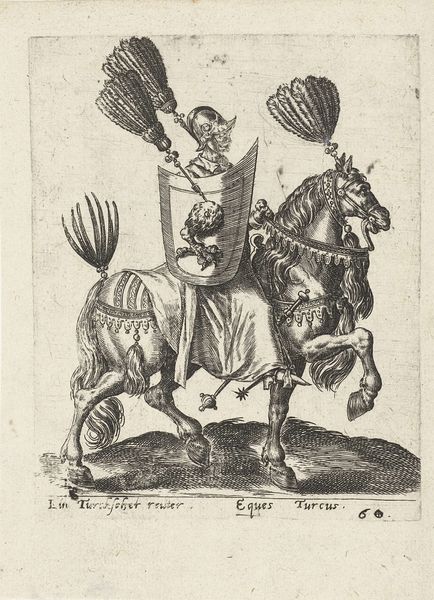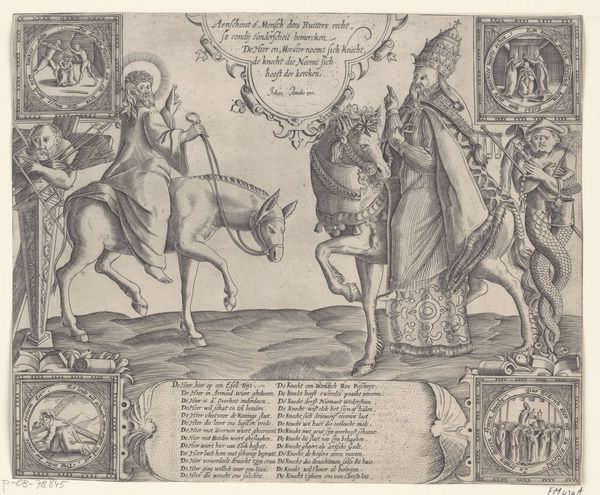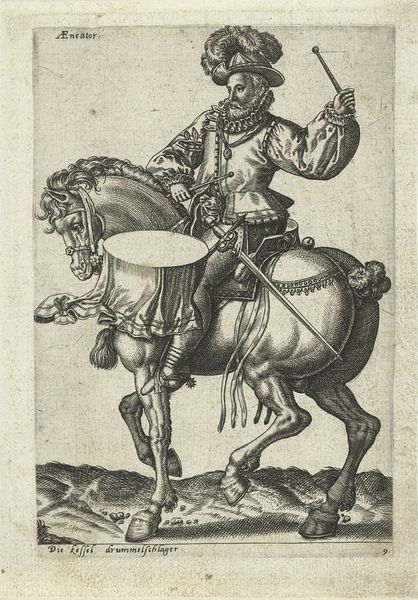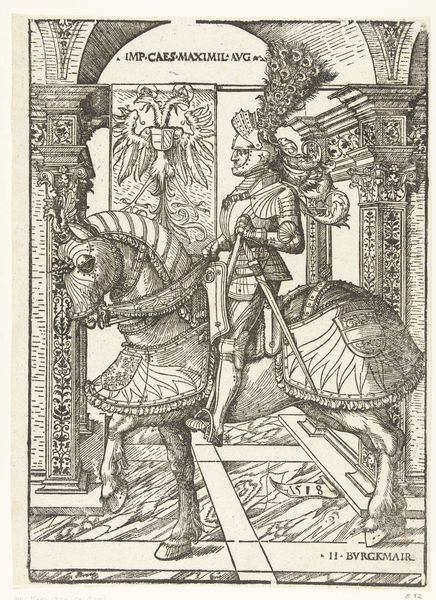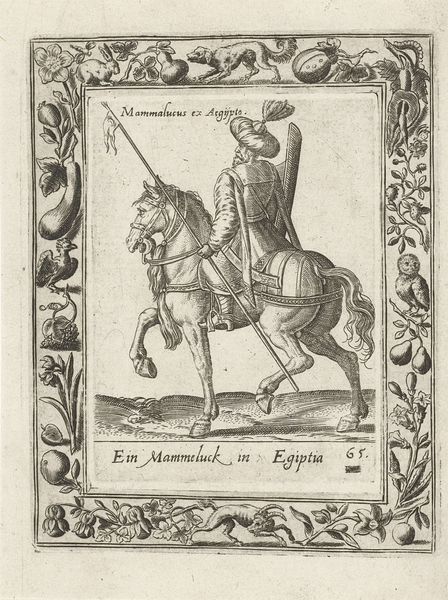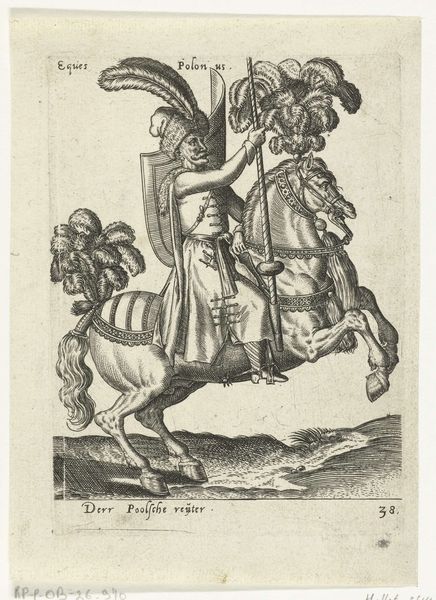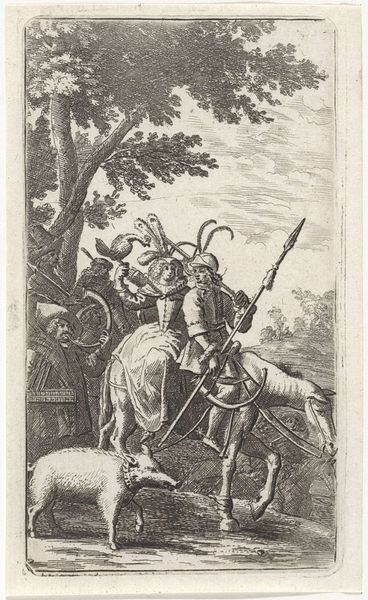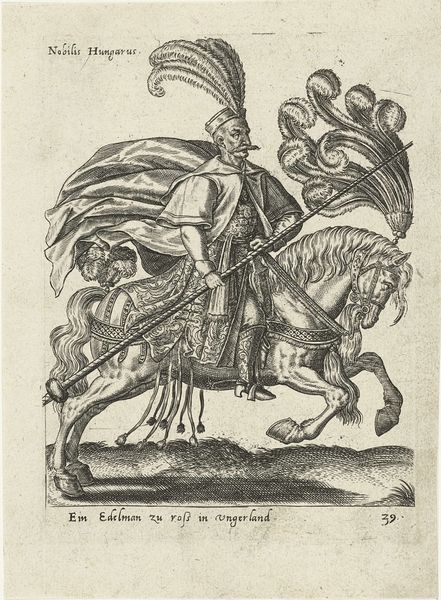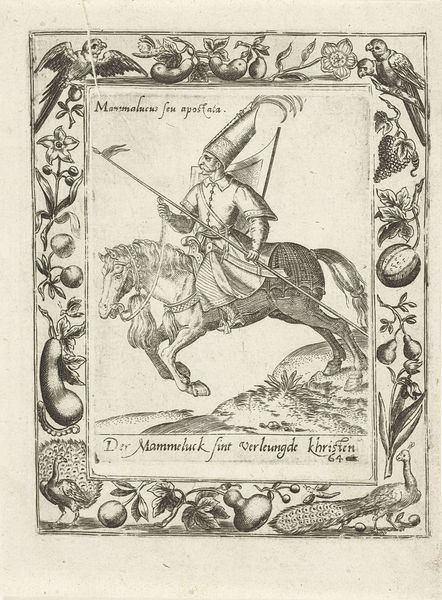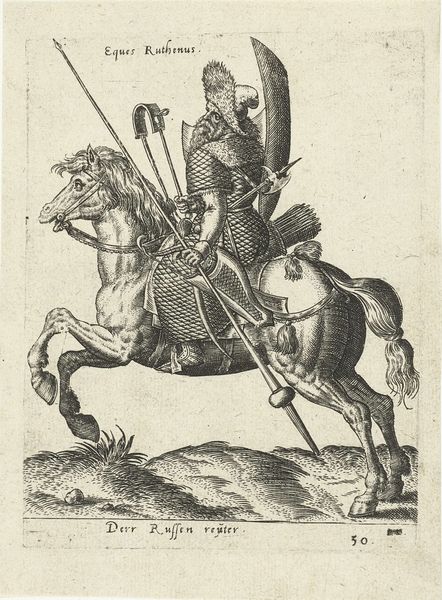
print, engraving
#
portrait
#
baroque
# print
#
landscape
#
figuration
#
history-painting
#
engraving
Dimensions: height 152 mm, width 372 mm
Copyright: Rijks Museum: Open Domain
Claes Jansz. Visscher's etching presents three equestrian portraits, each a potent symbol of leadership from different corners of the world. Here we see the Persian king, the Grand Duke of Muscovy, and the Emperor of China. The horse, a recurring motif, carries profound significance. Across cultures and epochs, it embodies power, nobility, and martial prowess. The way these rulers are depicted, confidently mounted, relates back to classical equestrian statues, like that of Marcus Aurelius. Consider how the horse, initially a symbol of dominance and control, undergoes a fascinating metamorphosis. The posture of the horse, rearing up, becomes an indicator of victory and triumph but may also represent a more primal, untamed aspect of power. In the collective memory, the horse invokes deep-seated associations with virility, freedom, and even chaos. These images engage us on a subconscious level, stirring primal emotions linked to our complex relationship with power and control. The echoes of these symbols reverberate through time.
Comments
No comments
Be the first to comment and join the conversation on the ultimate creative platform.
